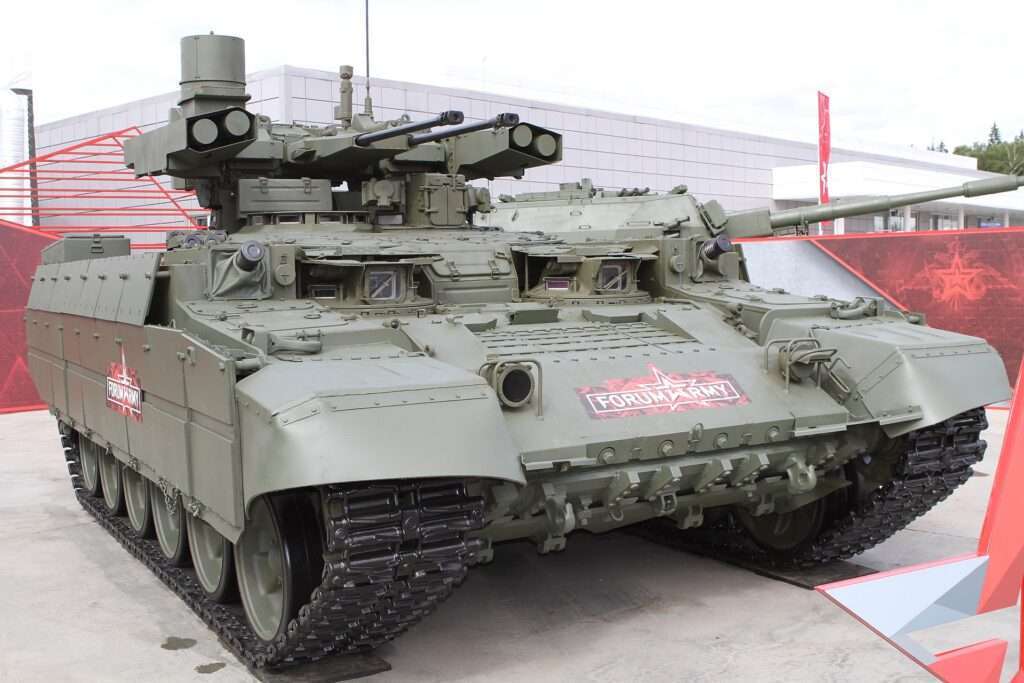Russia’s Devastating “Terminator” Tanks – The BMPT Terminator
by Olivia Brown ManagerSprawling with missiles, autocannons and grenade launchers, the BMPT has been given the unofficial nickname “Terminator”.
They are the result of lessons learned from high losses in urban warfare in the Soviet-Afghan War and actions in Chechnya.
The BMPT was designed specifically to solve this – with plenty of gun elevation and enough weapons for any potential target. The BMPT only entered service with Russia in 2018, but it has been operated by Kazakhstan since 2011.

Tank Escort
Ever since the creation of the tank in WWI it has been well understood that tanks without support can be picked off, even by infantry and basic anti-tank weapons.
No where is this more true than in urban areas.
These conditions are particularly dangerous for tanks as they are close quarters (some streets are too small to even rotate the turret) and contain many, many vantage points for an enemy.
Buildings add verticality to the battlefield, which provides foes with opportunities to strike the weak roof armor of tanks. And once under attack they are unable to return fire due to limited gun elevation.
Furthermore, the tightly packed buildings and streets allow the enemy to move around under cover and quickly retreat into hiding.
The Soviets experienced these difficulties first-hand during the Soviet-Afghan War. The undulating mountainous terrain gave Afghan defenders an advantage against Soviet tanks, who struggled to see and engage them.
Then in the First Chechen War Russian tanks were picked off in urban battles. In these scenarios the military was forced to use self-propelled anti-aircraft vehicles with their high gun elevation to fight off infantry in hills or buildings.
These lessons motivated the Soviets to create a heavily armored vehicle that would deal with these threats to allow tanks to do their jobs properly.
Work had started on a vehicle of this nature in the 1980s at the Chelyabinsk plant. This generated two vehicles, the Object 781 and Object 782.
They were both built from heavily modified T-72B hulls and equipped with a vast array of weaponry for the anti-infantry role. The Object 781 carried two 30 mm guns, while the Object 782 carried a 100 mm gun and 30 mm gun.
The Soviets decided to continue with only the Object 781, but the entire project halted in the 1990s when the Soviet Union collapsed.
However actions in Chechnya reminded the Russians of the need for a tank escort. The Chelyabinsk plant developed an entirely new vehicle between 1995 and 1996 known as the Object 787 (sometimes referred to as Object 754). This was the hull and turret of a T-72AV, but without the 125 mm gun.
Instead, high-elevation 30 mm guns were fitted to each side of the turret. Object 787 was also equipped with a pair of 12.7 mm machine guns and unguided missiles.
It proved to be highly successful in trials, but due to internal politics this machine would end up cancelled and in a museum.
Still, the project would once again be revived, this time by the Uralvagonzavod plant.
BMPT “Terminator”
Uralvagonzavod continued on using hulls of T-90 MBTs. Their creation was named the BMPT (meaning Tank Support Fighting Vehicle).
It was first shown off to the public in 2000, when it was equipped with an unmanned turret containing a single 30 mm cannon and four 9M133 “Kornet” missiles.
Sponsor Ads
Created on Nov 29th 2022 03:50. Viewed 128 times.



